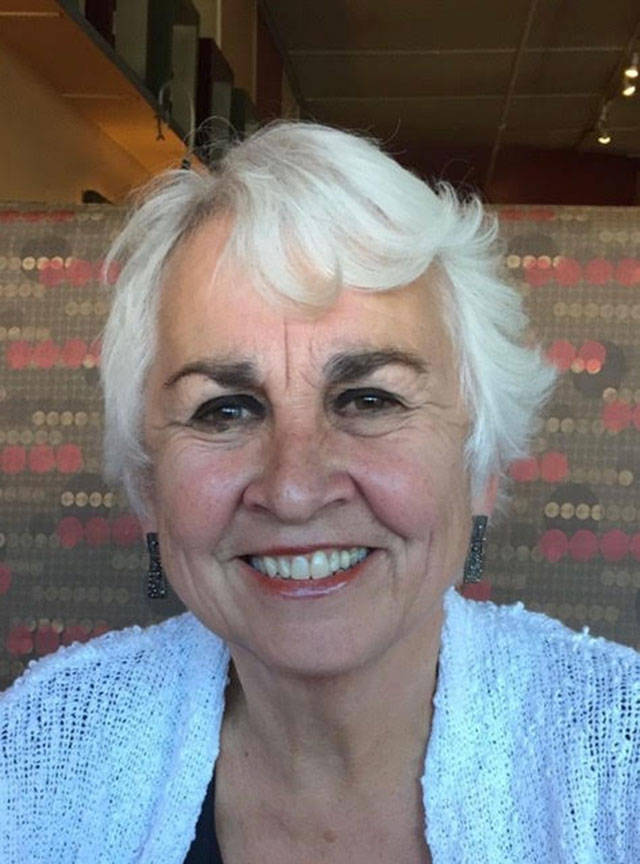You’d be surprised
How little I know
Even as of yesterday
— Jack Kerouac
This Highway Haiku was written for me. Not actually, but it is a good fit.
Last year, I became a board member of Vashon-Maury Island Audubon, and, before I knew what was happening, education chair. You’d be surprised how little I knew about birds, and how much I’ve learned over the past year. It’s true: the more you want to learn something, the more you can learn something.
I joined one of the field trips that Audubon offers on the second Saturday of every month. Led by bird experts Harsi and Erza Parker, we visited Raab’s Lagoon to see what aquatic birds we might find. They could tell a Bufflehead from a Goldeneye—from a distance! I can see the difference in pictures, but I’m working on it.
In October, I studied a report from national Audubon predicting that two-thirds of North American birds will be at risk of extinction due to the effects of climate change. Using an interactive online tool, I discovered which birds in King County are at risk with increases in global temperature: the Rufous Hummingbirds, Buffleheads, and Swainson’s Thrushes, among many others. I’m just beginning to learn more about birds and the ones I already know might not be here much longer. Yikes! We need to take action for birds!
In November, I bought the Vashon Audubon 2020 calendar, filled with photos of birds on our island. Now I’m studying it month by month, paying close attention to the birds marked at-risk: American Robin, Dark-eyed Junco and Song Sparrow, to name just a few that you might know. The calendar recommends things we can all do to support birds, e.g., make windows bird-safe, replace lawns with native trees and shrubs, and avoid pesticides.
At a presentation by Erza Parker, I learned about the Christmas Bird Count and how to tally the birds at my own feeder on the Jan.6 count day (You can do this next year). The birds that usually visit my garden seemed to disappear on the cold, cloudy day of the count. But among those making an appearance, I could tell the difference between Black-capped and Chestnut-capped Chickadee and recognized a Towhee by its tweet.
January offered opportunities to learn about creating habitat for birds. Audubon board members Dana Schuerholz, Adria Magrath and Jim Evans, along with many other volunteers, created a demonstration garden at the Vashon Heritage Museum. They planted trees, shrubs, and groundcovers that help local birds thrive. Take a look in May, when we’ll be participating in the Procession of the Species that ends at the garden.
Jim also teamed up with Cindy Young to teach classes on natives that birds like, which made me happy I’d ordered Black Twinberry and Mahonia from the Land Trust sale.
In February, I learned about the Pigeon Guillemot. This bird exudes personality with its red throat, black body, and red feet — it’s not even a pigeon. You don’t have to travel far to see one. As a participant in a regional study, Adria spent summer mornings at KVI beach last year documenting nests. She welcomes volunteers who would like to take a shift some early summer morning.
I attended an Audubon webinar online about birds being killed by glass window strikes. Since then I’ve been trying to digest this statistic: One million birds die from collisions every day in the United States (low estimate). While skyscrapers are responsible for some deaths, particularly for migrating birds, the biggest culprits are the windows in our houses, buildings four stories or less.
What should you do? Go outside to see if your windows reflect the trees you see from the inside: that’s what birds see and try to fly into. Place films, tape, or cords on your windows outside that are embedded with patterns birds can see. Many of these are not visible from inside and are available online at Feather Friendly and CollidEscape.
You can get window decals on Vashon. Place them in a 4”x4” pattern (2”x2” is even better) to be effective, but some would be better than none.
Early in my learning process, Harsi Parker said something like, “You’ll learn to love birds more when you know more about them.” Just recently, I heard what I thought was an eagle, and then saw what I knew was an eagle. I’m definitely loving birds more.
You can learn more about birds this spring: Bring binoculars to Ober Park at 9 a.m. on Saturday, March 14, for a birding field trip. Ready to move from a beginning birder to advanced? Sign up for one of 15 slots in the Advancing Birder course taught by Ed Swan, beginning May 5. Information on pre-requisites, classroom and field trip dates and registration at sylvia@sylvansanctuary.com.
Sylvia Soholt is education chair for Vashon-Maury Island Audubon and hopes to see you at a class, a field trip, or an Audubon program this year. She can be reached at sylvia@sylvansanctuary.com.



